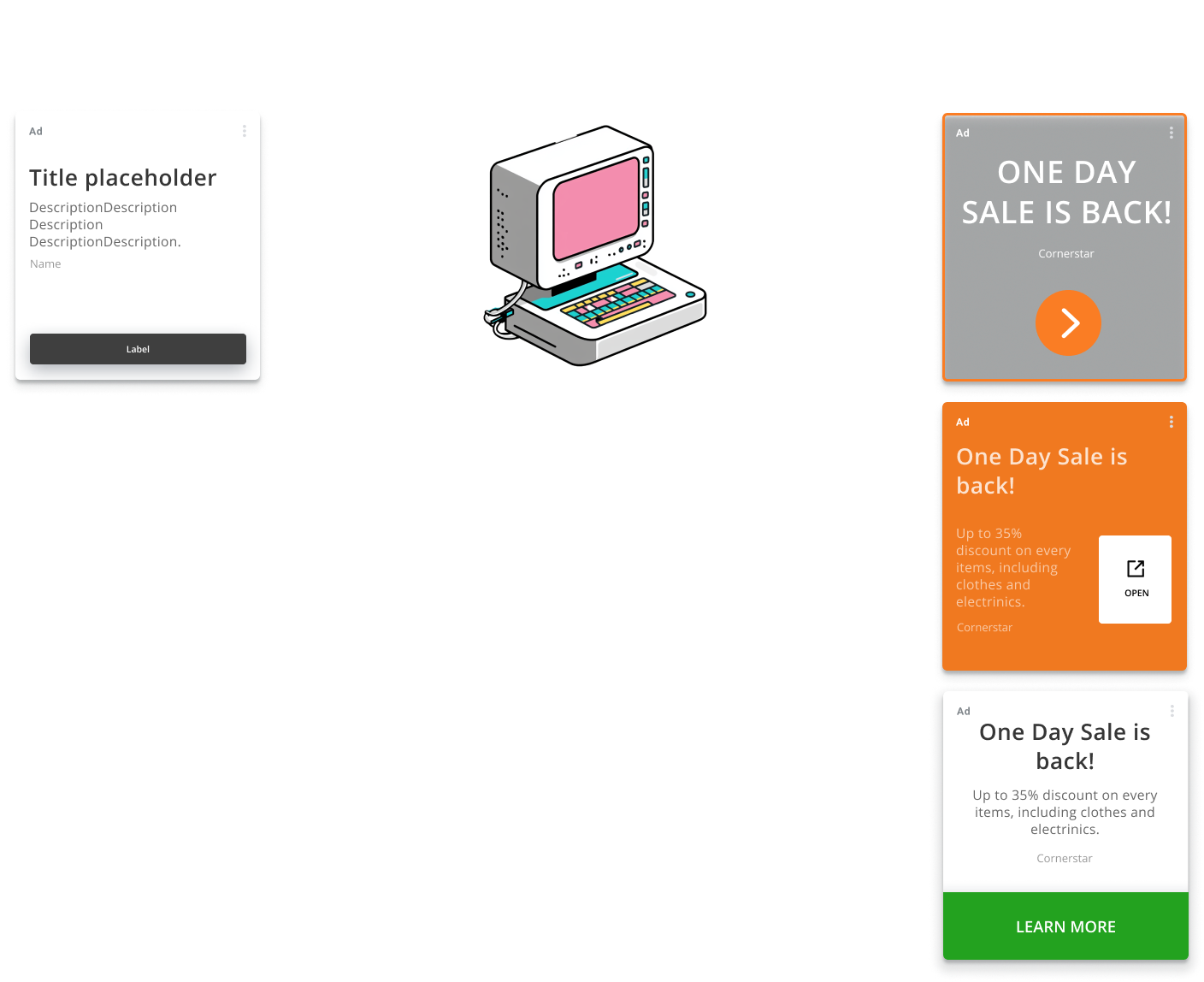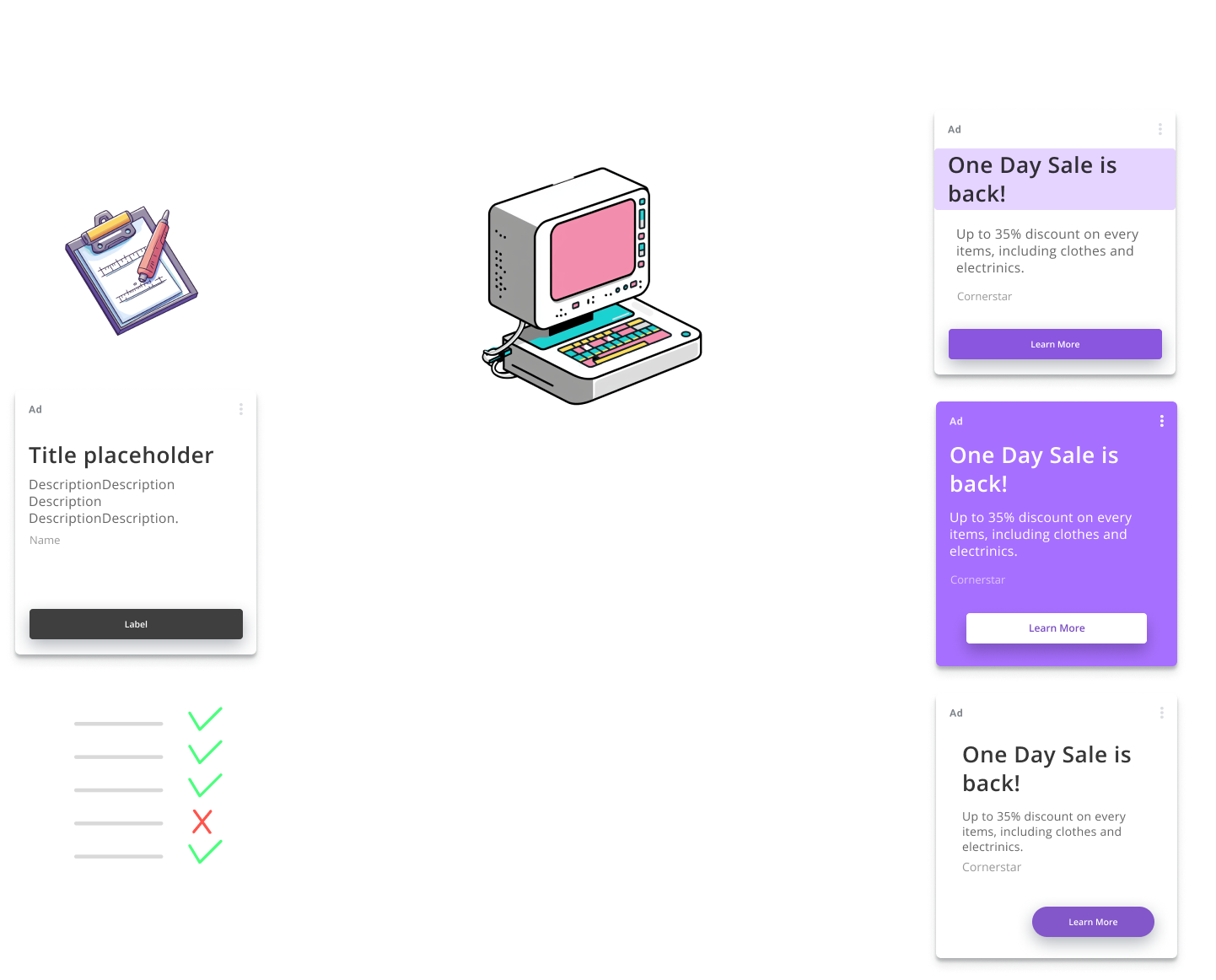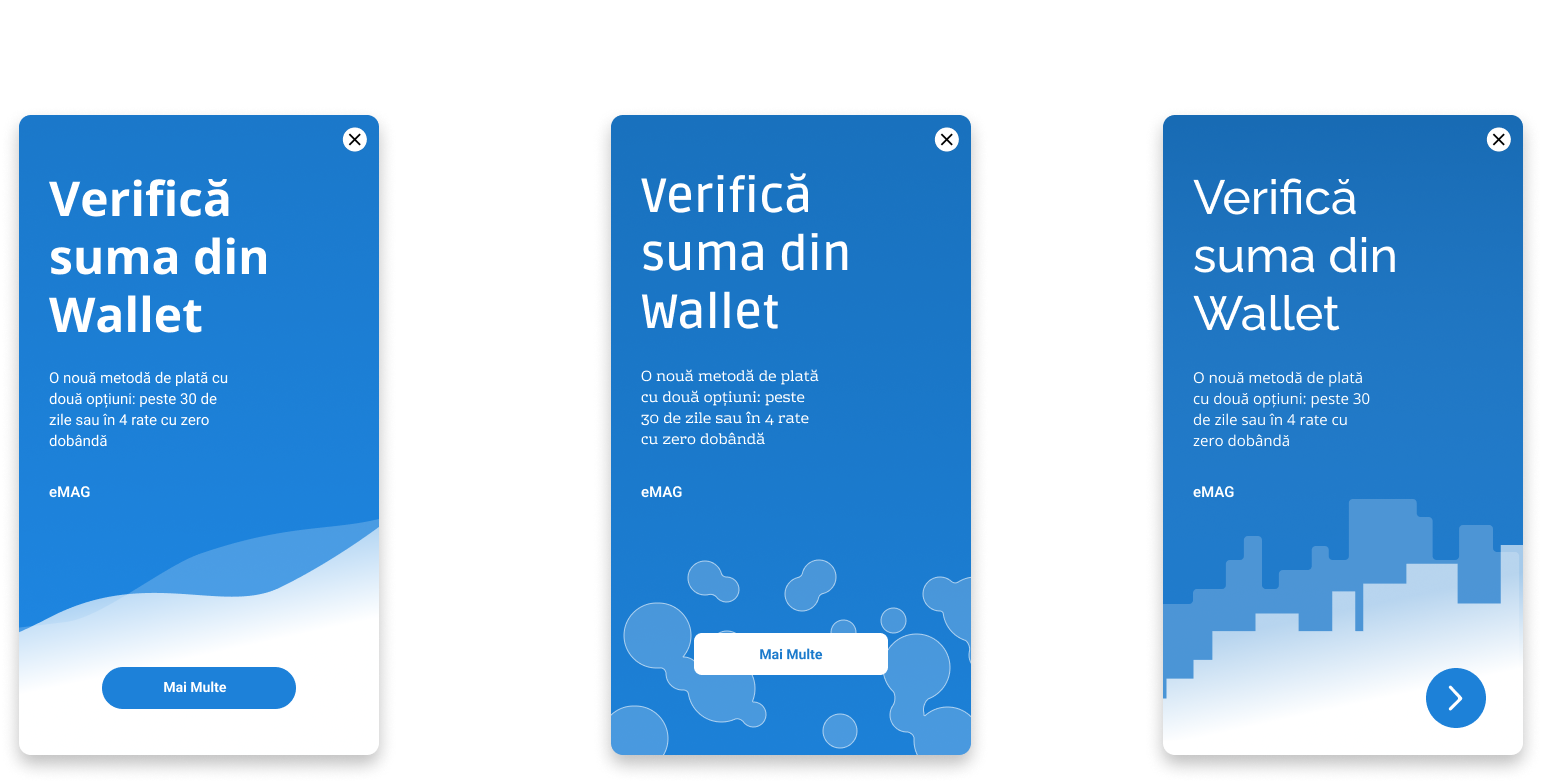Design Strategy and Collaboration
My idea was to create a new type of ads format built from several UI elements that machine learning models could pick from and experiment with in A/B testing. This would allow some freedom for the model to fine tune its understanding of the ad format while giving the designer control over the outcome. For instance, the model will have a selection of button styles, fonts, color strategies, backgrounds...
The designer can take ownership of these permutation and be in the driver seat of the machine learning models rather than being subject to it. Designers will be able to preselect the UI elements and establish rules on how the model could use them (for instance by avoing certain combination, prioritizing button size over headline...).
To kick things off, I began by identifying common adjustments made by engineers and analyzing patterns in ad performance.
Next, I designed a new ad format system with flexible UI elements, accompanied by a set of rules and best practices. The system was built from the ground up to be easily scalable, allowing other designers and teams to seamlessly integrate it into their workflows.
To bring this vision to life, I collaborated closely with a small group of engineers to develop a working prototype and craft a clear, compelling vision for the project. Storytelling and internal marketing played a critical role in securing buy-in from both the engineering and UX teams to ensure the project's success.






